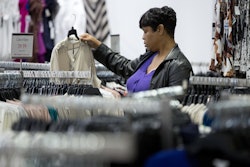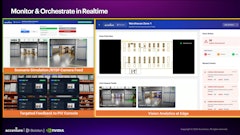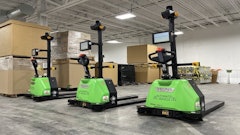
Amazon recently announced that Prime Now customers in Chicago can use the service to have meals from 80 local restaurants delivered to their homes in an hour or less—and for free, at least for a limited time. Chicago joined Seattle, Portland, Baltimore, Los Angeles and Austin (TX) as the sixth city to receive the service since it rolled out last fall. It certainly isn’t going to be the last, though.
Amazon’s announcement came a day after Uber shared its plan to offer evening meal deliveries in New York, Atlanta, Chicago, Dallas, Los Angeles and five other major cities across the country. This is an extension of Uber’s lunch-time delivery service, currently available in a dozen areas. Once the UberEats app launches—it’s due by the end of March—customers are going to be able to order dinners from local eateries, and have them picked up and dropped off by Uber drivers. (Delivery times are going to depend on individual meal-preparation times.)
As part of its ongoing bid to become the “everything business,” Amazon continually tries to cater to consumers’ growing interest in on-demand services, not just with restaurant meals, but with groceries, household staples, entertainment and more. Uber’s bid to carve out a niche in the delivery field stems from different motives, but the effects of these efforts are the same. They’re going to put more and more pressure on local and regional merchants to keep pace.
Restaurants could pay the requisite fees to join the clubs, so to speak, and gain (or protect) whatever patrons the listings may attract. Retailers may consider becoming third-party fulfillment-by-Amazon (FBA) or fulfillment-by-merchant (FBM) sellers on Amazon’s site, and gain access to its millions of customers; both options offer pros and cons. Local and regional grocers, though, face another threat: Amazon is developing warehouses around the country to fulfill grocery orders in urban areas on its own—within an hour or less. Smaller grocers likely can’t offer that sort of convenience and even regional chains would be hard-pressed to develop the measures needed to keep Amazon from poaching customers, given their comparatively tiny budgets.
On the plus side for local outlets, a lot of consumers rely on eyeball tests, personal tastes and label comparisons when they shop for groceries. This applies not only to meat, fruits and vegetables, but also to dairy and packaged products. No one likes to buy goods in dented cans or punctured cartons, and expiration dates carry significant weight in the choice between specific items. Many people also find it easier to fill uncertain needs and try new things while shopping in aisles rather than online.
Given all that, the chance that physical grocery stores are going to vanish any time soon, if ever, is highly improbable. However, as consumers increasingly use e-commerce to buy all sorts of things, their spending at physical stores is going to drop. Unless smaller stores can capture those online purchases, the steady loss of revenue is going to continually stress their budgets. Over time, a growing number of them are likely going to be forced to close, merge or sell their assets to larger companies.
However, the race for on-demand retail delivery options isn’t the sole province of well-funded firms. While Amazon, Walmart and Google battle for air dominance via drones, ambitious entrepreneurs are working on alternative routes to shoppers’ homes. Two Skype co-founders, for instance, are going to soon test small, self-driving carts that travel on sidewalks to deliver up to two grocery bags’ worth of items to local customers. Lightweight and affordable, these robots are built to fulfill orders within 30 minutes at 10 to 15 times less than current last-mile options, which could help local retailers, grocers and restaurants level the on-demand playing field with larger competitors.
Restaurants, as noted earlier, can also avail themselves of the new delivery services, if they so choose. After all, the dining industry isn’t wholly analogous to the grocery industry. For one thing, restaurants can develop reputations—and loyal clientele—on the basis of their employees (mostly chefs, but occasionally bartenders), employees’ work products (i.e., menus and/or dishes), ambience, prices, any combination thereof or a variety of other factors. Many butchers, store managers and other grocery workers undoubtedly do great work, and store appearances surely affect repeat visit rates. However, convenient location, low prices and product variety are the primary factors for consumers when selecting grocery stores.
For another thing, restaurants offer people a social experience—an opportunity to get out of the house, spend time with friends (and/or away from housemates), meet new people, and enjoy new or proven delights, all while avoiding meal prep and clean-up duties. The meals themselves can be a major attraction, but they aren’t the only one. Although some customers are open to socializing at the local market, most trips to a grocer revolve primarily (and often solely) around shopping.
For those reasons and others, home deliveries are as likely to complement a restaurant’s business as threaten it. Some establishments may lose customers, of course, but they all deal with a hard-to-please audience. Three out of 10 eateries close in their first year and another 30 percent do so within three years—higher failure rates than small businesses overall. Joining Prime Now or UberEats, or creating their own delivery service could help some restaurants avoid that fate by creating more consumer awareness and thereby expanding their audiences.
The new delivery services do face potential obstacles, though. Amazon has a long record of engaging in the comprehensive testing, data gathering and analysis that such ventures need to succeed, but it’s currently providing free two-hour delivery to Prime members in six cities, with one-hour delivery available for $7.99 (and free in Chicago right now). While the restaurants participate in revenue-sharing that may fund at least part of the delivery costs, Prime continues to expand its benefit list without raising its $99 membership fee. That fee doesn’t cover the average member’s annual two-day shipping fees, let alone its streaming video and music costs, and other offerings. It’s reasonable to expect that Prime is going to have to raise the subscription fee at some point, which could very well affect its existing membership base and its growth rate.
For its part, Uber now shares an arena not just with Amazon, but also with Maple, Arcade and a variety of other startups, both in food delivery and in the gig economy. As such, it competes for freelance workers with companies that agreed to give them stability, flexibility and a livable wage, among other things, which Uber doesn’t yet pledged to provide. (UberEats lunchtime deliverers can earn $12 an hour and $2 an order, though.) Delivering food is also a complicated proposition, particularly on busy city streets, and it can put extra wear and tear on UberEats’ contractors’ most vital assets—their cars. Plus, while deliveries from 10 a.m. to 2 p.m. currently cost up to $4, the expanded service is expected to charge $5 per order, higher than other food-ordering apps’ fees. All that said, Uber is said to be valued at $62.5 billion, so it should be able to afford lengthy tests of different fees and service iterations to see what works.
As e-commerce and m-commerce rewrite the rules of the retail industry, services like Amazon Prime Now, UberEats and others offer consumers a glimpse at what may one day be possible: Instant ordering of almost anything from seemingly anywhere, together with near-instant fulfillment of those purchases. That sort of convenience doesn’t happen overnight, though, and it is surely going to come at a cost, one way or another. Unless local and regional stores find a way to compete in this area with the larger companies, they’re going to end up paying a particularly high price for all of this innovation.




















